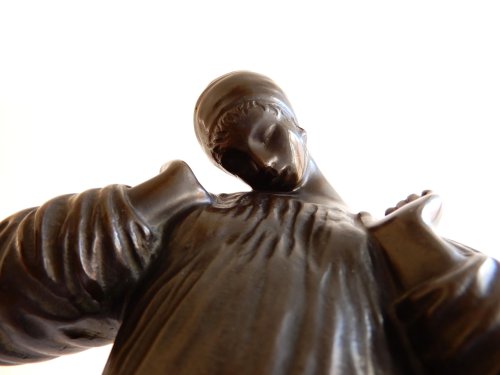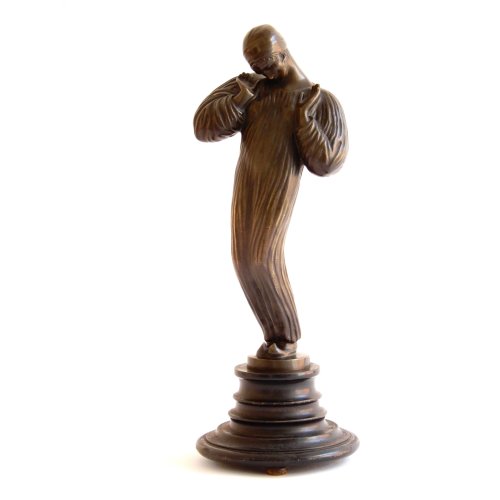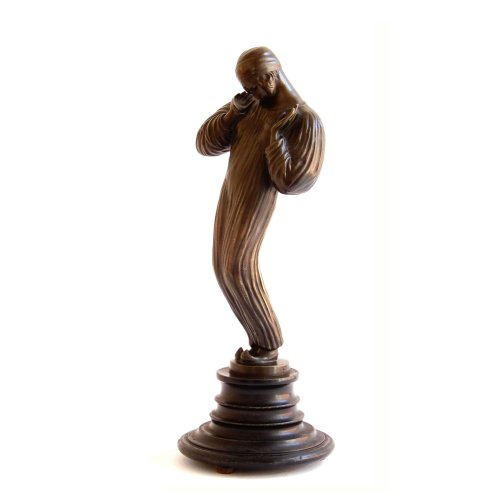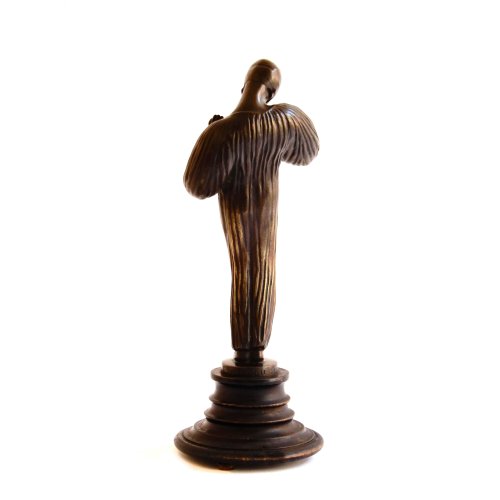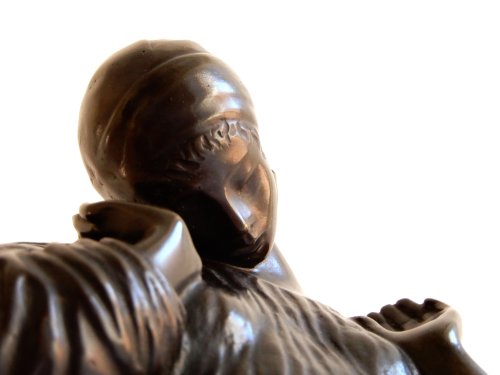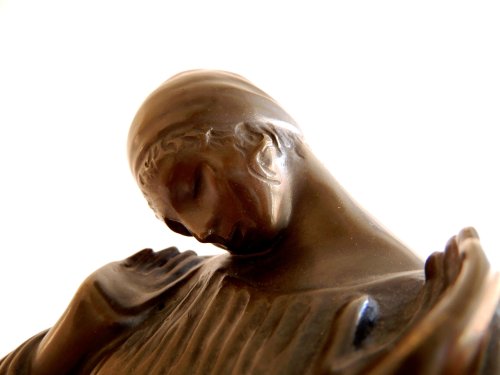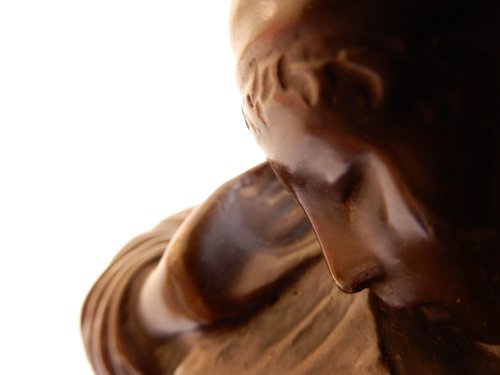Florian Josephu-Drouot (1886-1978) Oriental female dancer
About this piece
Beautiful and rare bronze sculpture of a dancer. A few years ago we had a
terracotta version of this dancer in our collection, I know from the artist's family that the family owns 1 bronze version, I had never seen her before.
It is a dancer in Oriental clothes, she also wears a turban.
In that period, often even slightly earlier, this was a popular theme for many artists.
The movement in this sculpture is beautiful, as is her expression and sophistication, for example the way her face is depicted.
The sculpture is cast in bronze, it is a work from the mid-1920s by the Viennese sculptor Florian Josephu-Drouot (1886-1978).
It is signed at the base with 'F. Josephu-Drouot'.
Biography:
Florian Otto Daniel Josephu (Pilsen,1886-Vienna,1978), Florian and
his younger brother, the sculptor Josef Josephu (1889-1970) started
their early studies in Graz at the Staatsgewerbeschule. They studied
together with Hans Brandstatter, George Winkler and Anton Brenek.
By 1904 the family moved to Vienna and they attended the Wien Akademie die Bildenden Kunsten. Egon Schiele studied at the same time at the Academie. Florian entered the Academie in 1904 and studied together with Hans Bitterlich, Edmund von Hellmer and Karl von Kundmann. In 1906 Florian gained attention with his bust of the pianist Alfred Grunfeld, a later plaque is still on display in Vienna, marking Grunfeld's home. In 1909 Florian was awarded 200 Kronen from the emperor for his portrait of the late court actor, Adolf Ritter von Sonnenthal. He won several other prizes and in 1913 he won the Schwendenwien Scholarship which included a chance to study in Italy for a year, then France and Germany. Sadly, WWI prevented him from those studies. Florian studied a total of 8 years at the Academie and graduated Magna cum laude.
He served in the Austrian Infantry Officer (Lieutenant) during WWI 1915-1918. He received a stomach wound and was captured by the Russian forces in Siberia. While on leave he met Olga Klein and they married. Olga was Jewish, while Florian was Catholic. Ironically, Josef married also a Jewish woman named Olga, who was also Jewish.
Olga had a sister, Ruza, who married Ivan Mestrovic. Ruza designed hats for Emile Flöge, then partner of Gustav Klimt. Because their connection to Mestrovic, the Josephu brothers had ties to the Secession with Klimt and Schiele, though neither was a member. According to Klimt biographer Anne Marie O'Connor, they all would have known each other.
The busiest time creatively was between the two wars. Both their careers flourished but Josef became more successful and well known. Both were subjects to many magazine and newspapers articles. The brothers fought over ideas about art, and art as a business. Josef eventually became known by his last name, Josephu. In the mid 1920's Florian added the Drouot name (it was his grandmother's maiden name) to separate himself from Josef, though later he dropped it again. The terracotta dancer is made during the time he called himself Josephu-Drouot. Josef was more successful and was asked to represent Austria at the International Art Exhibition in Rome in 1925. It was painful for Florian he wasn't selected, being the elderly brother. The large differences between the brothers created an lot of artistic rivalry between them. Florian was a member of the Kunstlerhaus, Josef a member of the Albrecht Dürer-bund.
When Nazism grew, Josef was asked to be an official sculptor of the Third Reich, but only if he divorced his Jewish wife. He refused and was not permitted to work. In 1939 Josef, Olga and their daughter finally left Vienna and arrived in the US. Florian sent his Olga ahead to Split, Croatia, and joined her a few months later, with help from Ruza Klein, now divorced from Mestrovic. The brothers never saw each other again. The grandson of Josef was told Florian and all family died during the war, but in 1997 the families reunited.
After the war Florian returned to Vienna and is credited with many restorations including work on the Belvedere, the Athena Fountain in front of Vienna's Parliament and the Mozart memorial of the main cemetery. Josef continued working in New York but never saw the success he had in Vienna, he died in 1970. Florian died in Vienna in 1978.
Research info:
With many thanks to the grandson
of Josef Josephu, Marc Baron (New York), for sharing this interesting
information about the two brothers Florian and Josef Josephu. At the
moment he is writing a book about them after many years of research.
Condition
Very good, beautiful patina. The wooden base has a restoration on the back.
Material:
Bronze
Measurements:
Height: 35 cm
(13,78")
Hoogte bronzen sculptuur:
Height: 28 cm
(11,02")
Period:
1925-1930
Origin:
Wenen, Oostenrijk
Artist / atelier:
Florian Josephu-Drouot,
